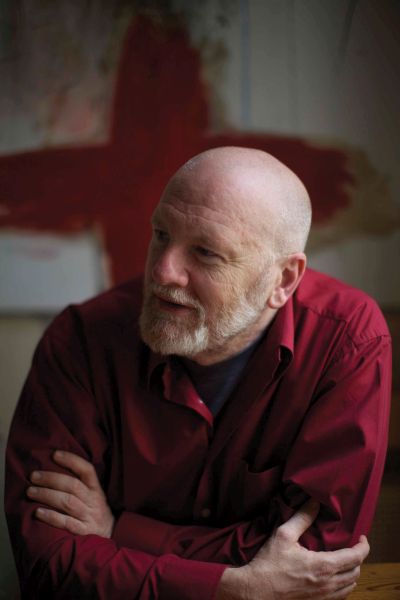 United Kingdom Mahler: London Symphony Orchestra, Daniele Gatti (conductor), Barbican, London, 27.4.2014 (GDn)
United Kingdom Mahler: London Symphony Orchestra, Daniele Gatti (conductor), Barbican, London, 27.4.2014 (GDn)
Mahler: Symphony No. 7
Mahler’s Seventh Symphony doesn’t conduct itself. It needs leadership from an interpreter with a clear vision for the piece, and with the confidence to sideline many aspects of the music in order to highlight others for the sake of coherency and form. Many conductors, even Mahler specialists, balk at the challenge (most famously Bruno Walter, who only conducted it once), but Daniele Gatti is clearly not intimidated. His reading this evening was a real interpretation: distinctive, focussed, and with clear musical ideas projected through Mahler’s score. At times, it seemed that those ideas were not actually native to the music, and that the work was being manipulated to fit external thoughts, but that is always the price for a successful interpretation of this intractable and often self-contradictory score.
Gatti’s grand plan was to treat the five-movement arch structure as a more straightforward three-movement ternary plan. The outer movements carried the weight of the argument, and both were taken to extremes of drama and intensity. To contrast them, the inner three were conflated to form an extended interlude. So significant pauses were observed between the first and second movements, and between the fourth and fifth, but movements two to four were played virtually attacca. And the scherzo third movement was presented as playful and delicate, so as to bring it in line with the Nachtmusik atmosphere of its neighbours.
Most unusually of all, Gatti took everything very slowly, never labouring the music, but making sure that all of the ideas were given due weight and prominence. One of the biggest problems for conductors approaching this work is to reconcile the overall structure with the huge quantity of often eccentric detail. Gatti managed to square that circle with his slow tempos, which united every passage in the work while also giving him the space to focus on all those tiny orchestral interjections that make this work so unique.
The first movement was the most successful. Gatti structured the movement around the three or four long build-ups to its main climaxes. These were performed with astonishing intensity, especially the one at the very end. But that atmosphere was maintained throughout the movement, even in the quieter sections where he also turned his attentions to all the tiny solos from unexpected corners of the orchestra. The London Symphony played magnificently for him, but his approach really put them to the test. The brass in particular were required to play louder and slower than most conductors would expect of them in this work.
One interesting addition to the brass section was Peter Moore on first trombone. This is his first appearance with the LSO since it was announced, or rather leaked on Twitter, at the weekend that he has been appointed co-principal. Presumably that means he will be sharing the chair with Dudley Bright, who this evening played the tenor tuba solo. Bright had a few problems at the very beginning and was insecure in the top register, although this again could be due to the fact that Gatti wanted this solo slower and louder than usual. But the later interjections, in the middle register, were more successful. The trombone section sounded great under Moore, as did the trumpets under the similarly youthful Philip Cobb (Moore is 18, Cobb only in his mid 20s). With these two young players leading the trumpets and trombones, the chances are we will be seeing a new golden age of brass playing at the LSO – not that the section has been deficient in recent years.
Gatti took a playful approach to the inner movements, still slow, but with plenty of tempo variance as well. Playing down the drama of the scherzo was a gamble, but it paid off. This was the one movement that Gatti conducted at a tempo approaching the norm, still on the slow side, but not as wilfully so as elsewhere. But again, the details were what made this special, all those fleeting orchestral colours, from the percussion, or the bottom end of the woodwinds. But the music was also effectively punctuated with satisfyingly dark bass sounds, particularly from the bottom strings of the harps, an effect that Gatti rightly made a point of bringing out.
The finale was the least successful movement. Again, Gatti’s approach was to take the music slowly, make the tuttis imperious, and gradually build up in intensity to the key climactic points. But Mahler has more subtle ideas in mind here. He will often break off midway through a long crescendo, and suddenly take you into an eerily calm pastoral world for a few bars before returning to the fray. Those devices didn’t have a place in Gatti’s conception, and so were effectively ignored. Five movements on, Mahler has taken us on a journey from the soundworld of the first movement, and the finale is in a different place, so Gatti’s efforts to bring us back to where we began put his interpretation at odds with the now transformed character of the music.
Even so, his approach rewards more than it taxes in every movement, including the finale. And whatever differences of trajectory we might feel between the work and the interpretation, the slow tempos and focus on detail throughout always shine new light on this music. Overall, the performance was a success because he based his reading on a minute attention to detail. With a lesser orchestra, that could have been dangerous, but with the LSO, here on fine form, all those details were there, clear and precise, exactly what Gatti required to piece together his bigger picture.
Gavin Dixon
This concert was broadcast live on BBC Radio 3 and is available to listen on demand until Sunday 4 May 2014 at: http://www.bbc.co.uk/programmes/b041vg02
